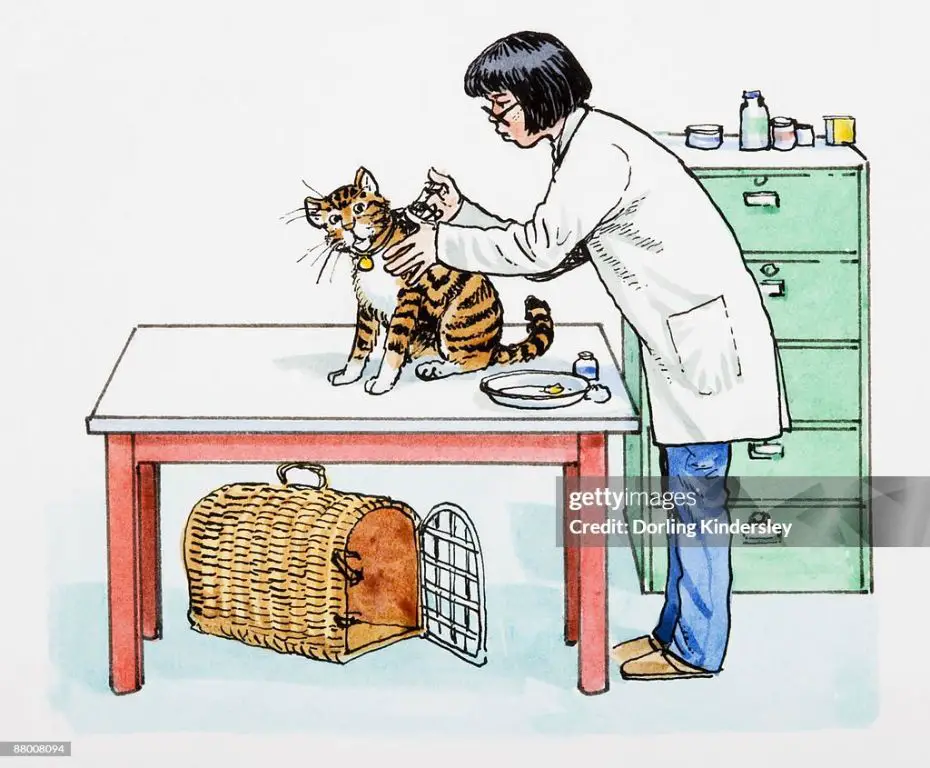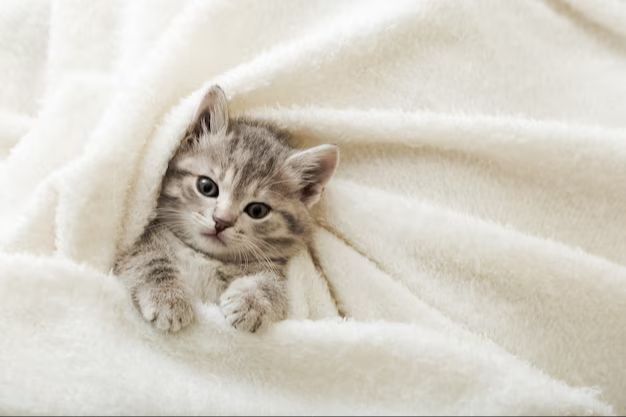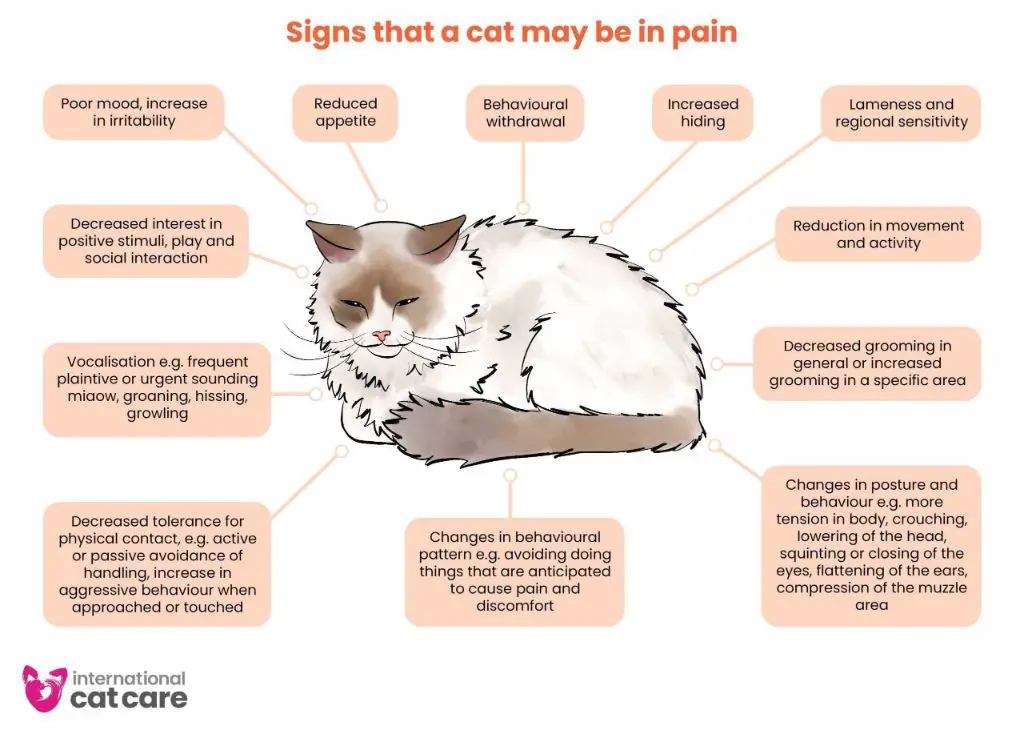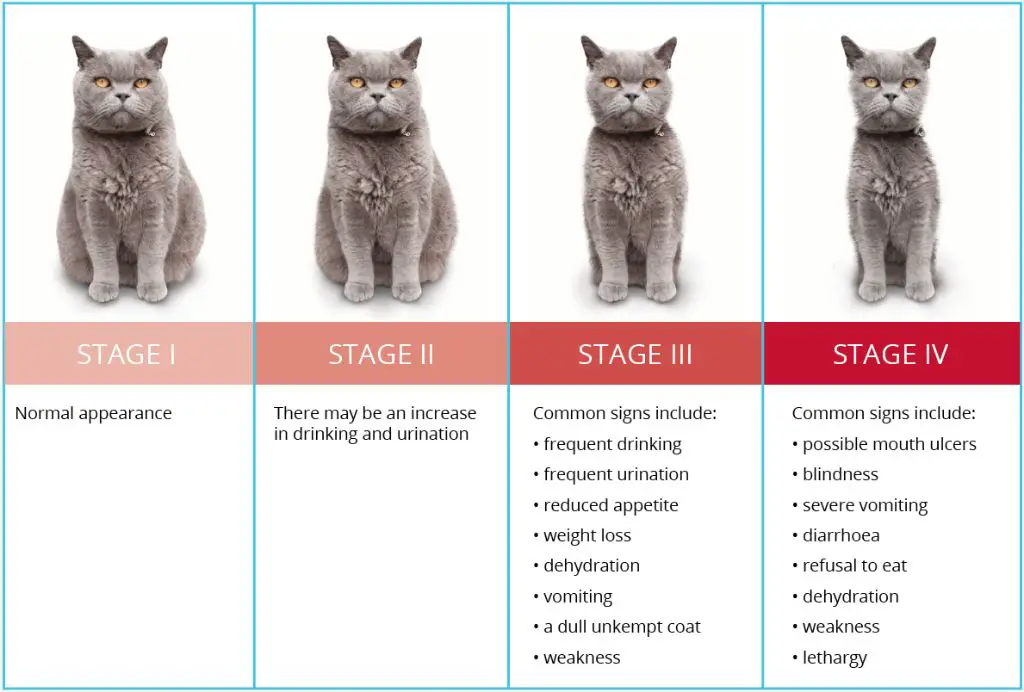Kidney disease is one of the most common health issues affecting cats as they age. Over time, cats can develop chronic kidney disease, which is a gradual, irreversible decline in kidney function. Kidney disease is serious since the kidneys filter waste from the bloodstream and regulate hydration. When the kidneys are compromised, toxins can build up and cause a range of symptoms. This article provides an overview of kidney disease in cats, including the stages of the disease, whether it causes pain, treatment options to manage symptoms and slow progression, and how to care for a cat with kidney disease at home. The goal is to help cat owners understand chronic kidney disease in cats and how to provide the best quality of life.
Signs of Kidney Disease
There are several signs that may indicate your cat is suffering from kidney disease. These include:
- Loss of appetite – Your cat may start eating less or become very picky with food as kidney disease causes nausea and mouth ulcers.
- Increased thirst – Kidney disease prevents the body from concentrating urine, so your cat may drink more to compensate.
- Weight loss – Appetite loss combined with an inability to properly digest nutrients can lead to gradual weight loss.
- Vomiting – Toxins that the kidneys can’t filter out can cause nausea and vomiting.
- Diarrhea – Waste products that build up in the blood can cause gastrointestinal upset.
Other signs to look out for include lethargy, bad breath, mouth ulcers, and poor coat condition. If you notice any of these symptoms in your cat, take them to the vet for a checkup.
Early diagnosis and treatment is key to managing kidney disease and improving quality of life. Be attentive to changes in your cat’s health and behavior.
Stages of Kidney Disease

Kidney disease in cats often progresses through four main stages:
Stage 1: No outward signs are exhibited, but blood and urine tests indicate reduced kidney function. Kidney function is about 25% reduced at this stage.
Stage 2: Mild clinical signs may begin to appear, such as increased water consumption and urination. Kidney function is about 40% reduced.
Stage 3: Clinical signs are more pronounced, including vomiting, diarrhea, weight loss, mouth ulcers and bad breath. Kidney function is about 60% reduced.
Stage 4: The kidneys have almost complete failure. Severe vomiting, little appetite, and ulcers are present. Without treatment, this stage leads to death.
Catching kidney disease in early stages allows for better management. Treatment aims to slow further deterioration and manage symptoms.
Does Kidney Disease Cause Pain?
Kidney disease is progressive and classified into four stages based on laboratory tests. In the early stages of kidney disease, most cats do not show any outward signs of illness and typically do not experience pain or discomfort. However, as kidney disease advances to later stages, it can begin to cause symptoms that may be painful for cats.
Mild to moderate kidney disease (stages 1 and 2) does not typically cause pain. The kidneys are still functioning at over 60% capacity in these early stages, so there is no buildup of toxins in the bloodstream to cause systemic effects. Since there is minimal impact on other organs at this point, most cats feel normal and do not experience pain.
In more advanced stages of kidney disease (stages 3 and 4), when kidney function declines below 60%, cats may start to feel unwell. Toxins accumulate in the blood, causing ulcers in the mouth and stomach, nausea, vomiting, and loss of appetite. Fluid retention and high blood pressure can also develop, leading to breathing difficulties. These effects of late-stage kidney failure can result in significant pain and discomfort for cats.
Therefore, while early kidney disease often goes unnoticed, advanced kidney disease can cause moderate to severe pain. Working closely with your veterinarian is key to monitoring your cat’s kidney function and managing pain through all stages of the disease.
Sources of Pain
Kidney disease can cause pain in cats in several ways. As the kidneys fail, they are unable to effectively filter waste products from the blood. This causes a buildup of toxins that can damage other organs and tissues, leading to pain.
One source of pain is damage to the kidneys themselves. The kidneys have many nerves, so inflammation or scarring of kidney tissue from toxins can directly cause pain and discomfort. Kidney stones or cysts can also be very painful.
Ulcers are another common source of pain. The buildup of toxins leads to nausea and vomiting in kidney disease. This can damage the lining of the stomach and esophagus, causing painful ulcers. The toxins also create an imbalance in stomach acid production.
The joints and bones can also be affected. Improper calcium and phosphorus levels damage bones, leading to pain and fractures. Toxins may also inflame joint tissue like the synovial membranes, leading to arthritis-like joint pain.
In advanced kidney failure, the damage to the kidneys leads to anemia and nerve damage. This can cause body-wide pain and discomfort. Overall, many sources contribute to potential pain as kidney disease progresses.
Treating Pain

There are a few options for treating pain associated with chronic kidney disease (CKD) in cats:
Pain medication such as NSAIDs can help relieve pain and improve quality of life for cats with CKD. According to Today’s Veterinary Practice, NSAIDs can be used safely in cats with stable CKD, though it’s best to avoid them in advanced kidney failure. The vet will monitor kidney values and signs of side effects when prescribing NSAIDs for cats with CKD.
Treating the underlying kidney disease can also help relieve associated pain. This may involve medications, intravenous fluids, a kidney-friendly diet, and other therapies as recommended by your veterinarian based on your cat’s stage of kidney disease.
Alternative pain relief methods like acupuncture, massage therapy, or joint supplements may also provide additional comfort for cats with painful CKD.
Overall, properly managing CKD and providing pain medication when appropriate can help improve comfort and quality of life for cats experiencing pain related to kidney decline.
Improving Quality of Life
There are several ways to help improve your cat’s quality of life when dealing with chronic kidney disease.
Fluids – Providing subcutaneous fluids can help flush toxins from the body and prevent dehydration. This helps reduce strain on the kidneys and makes your cat feel better overall (Elliot et al, 2000). Many cats tolerate fluids well at home if owners are trained on proper administration technique.
Diet – Feeding a renal diet designed for kidney support can prolong survival in kidney disease patients. These diets are low in phosphorus and protein but still nutritionally balanced. Reduced protein slows progression of kidney damage while low phosphorus helps prevent secondary hyperparathyroidism (Polzin and Churchill, 2016).
Medications – Drugs like antacids, antibiotics, and phosphorus binders can help manage side effects and complications of CKD. Anti-nausea medication may also be useful if your cat is experiencing vomiting or inappetence. Always check with your vet before starting any new medications.
Additional Care – Providing easy access to litter, keeping water bowls filled, grooming if needed, and keeping up normal interaction can also boost quality of life. Monitoring for any new symptoms and addressing changes promptly is very important.
With dedicated home care and close work with your vet, many cats can live happily with kidney disease for years. Focus on maximizing comfort and quality time with your pet.
When to See the Vet
Kidney disease often progresses slowly in cats, but there are certain signs that indicate you should take your cat to see the veterinarian right away. These include:
- Signs of pain like vocalizing, hiding, restlessness, or aggression
- Complete loss of appetite or refusal to eat for more than 24 hours
- Vomiting or diarrhea that lasts more than 24 hours
- Marked increase in water consumption or urination
- Difficulty urinating or decreased urine production
- Lethargy, depression, or other behavior changes
- Sudden onset of blindness

According to the experts at VCA Hospitals, https://vcahospitals.com/know-your-pet/kidney-failure-chronic-in-cats, if you notice any of these signs in your cat, take them to the vet right away for examination and blood and urine testing. Catching kidney issues early allows for better management of the disease.
Kidney disease is serious and can be fatal if left untreated. So if your cat displays symptoms like vocalizing pain, lethargy, inappetence, vomiting, or other signs of illness, don’t hesitate to get them veterinary care. The sooner kidney disease is diagnosed and managed, the better your cat’s chances of living a good quality life.
Caring at Home
There are several things you can do at home to keep your cat comfortable and improve quality of life when they have kidney disease:
Keep your cat hydrated by encouraging them to drink, offering canned food with extra water added, or giving subcutaneous fluids under the skin. According to PetMD, “It is important to keep your cat hydrated” when they have kidney disease.
Make sure litter boxes are clean, accessible, and large enough for your cat. Cats with kidney disease may need to urinate more frequently.
Gently massage your cat or brush them regularly, which can help improve blood circulation. PetHelpful advises “Daily gentle petting and massage can help stimulate blood flow.”
Feed a kidney-friendly diet recommended by your vet. This may include reduced protein, phosphorus, and sodium.
Give medication as prescribed by your vet to help manage symptoms or slow disease progression.
Provide soft, comfortable bedding in your cat’s favorite quiet spots around the house.
Monitor for any changes in eating, drinking, urinating, activity level, or behavior and let your vet know if you notice declines.
Pet your cat, talk to them, take pictures, and make happy memories. Enjoy the time you have together.
Prognosis
The prognosis for cats with chronic kidney disease depends on the stage of the disease. In early stages, cats can live for years with proper management and veterinary care. However, the disease is progressive and will worsen over time. In advanced stages, when cats are in kidney failure, life expectancy is limited to weeks or months.

According to the Cornell Feline Health Center, cats in stage 4 kidney disease have a median survival time of only 35 days[1]. However, cats can still have good quality of life with palliative care. The goals shift from curative to comfort care, with treatments focused on minimizing uremic toxins, managing pain, maintaining hydration and nutritional status.
There are options like subcutaneous fluids, appetite stimulants, anti-nausea medication, phosphate binders, and omega-3 fatty acids that can help cats feel better. Work closely with your veterinarian to provide supportive care tailored to your cat’s individual needs and maximize their remaining time.
Make the most of each day and appreciate every positive moment. Monitor your cat’s symptoms and comfort level to help determine when euthanasia may become the most humane option. Saying goodbye is always hard, but take pride in the loving home you provided.

